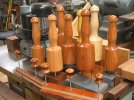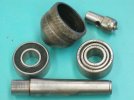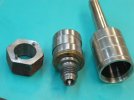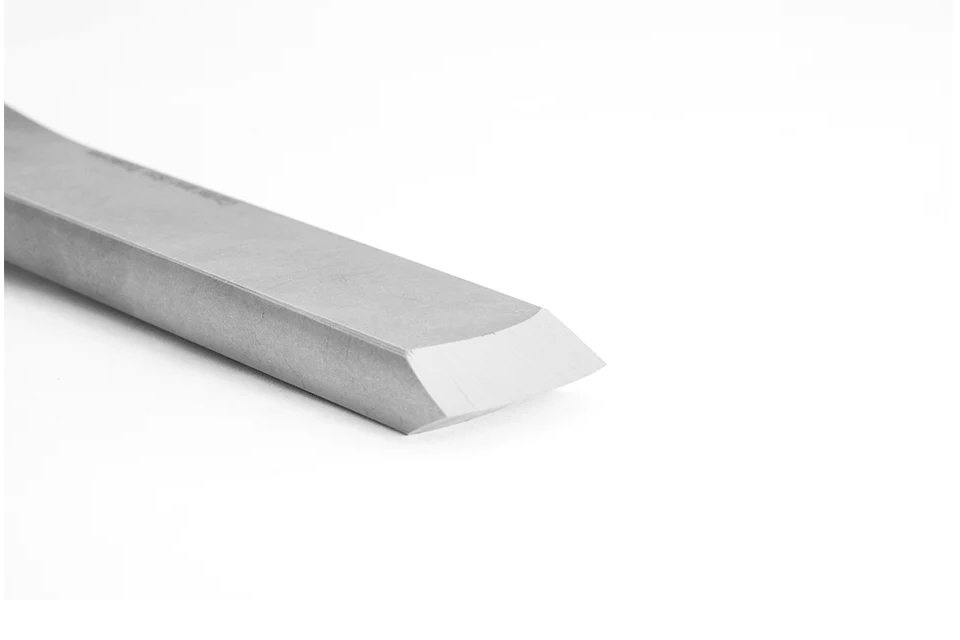Why thinner?I have turned thin stock with a skew. In this case, I would probably use a thinner skew.
You are using an out of date browser. It may not display this or other websites correctly.
You should upgrade or use an alternative browser.
You should upgrade or use an alternative browser.
Thin spindle work.
- Thread starter Chaz
- Start date
I'm not sure a string steady rest would be appropriate. But here's where I'm at:I’ve not done it, but if you search for “string steady rest” you may see something that could help. They tend to be used with very thin items and really do work.
I've managed to develop tool and technique to reduce half of the chatter and quite a bit of time. A lot of the time spent is on just getting the dowel trued up. I start at 5/8" and have to make 5/16". I true the shaft with a roughing gouge. The warp in the blank means I have the taper started in truing.
From there I've been using a skew. I'm using a C&S 1" x 3/8". It's heavy. Works great, but difficult to control for these spindles. I have a 3/4" I don't use much. I'll dig that out and try it. I wish I had a 1/2".
About a month ago I was doing some mallets and i was getting aggressive because I wanted to get them done. I was getting whip and chatter down at the handle.

The mallets.
I decided to change from my favorite Delta 46-490 to a heavy duty shopmade live center that uses two 6203 bearings rather than the one double row 5202. Both centers use a taper fit tip (top end of a #1 Morse taper). It made a big difference in chatter reduction. Maybe changing to a more robust live center can help eliminate that whip and chatter.

The bigger live center that worked well.

Delta 46-490 showing two different types of 5202 double row bearings and the tapered insert.

Another type of live center I've found lacking in rigidity even it does use two 6202 bearings. For me, the whole thing sticks out a little to long and gets a little whippy.
The entry-level live centers that often come with lower priced lathes are a start and better than dead centers to a degree, but good live centers are a joy to use.

The mallets.
I decided to change from my favorite Delta 46-490 to a heavy duty shopmade live center that uses two 6203 bearings rather than the one double row 5202. Both centers use a taper fit tip (top end of a #1 Morse taper). It made a big difference in chatter reduction. Maybe changing to a more robust live center can help eliminate that whip and chatter.

The bigger live center that worked well.

Delta 46-490 showing two different types of 5202 double row bearings and the tapered insert.

Another type of live center I've found lacking in rigidity even it does use two 6202 bearings. For me, the whole thing sticks out a little to long and gets a little whippy.
The entry-level live centers that often come with lower priced lathes are a start and better than dead centers to a degree, but good live centers are a joy to use.
You can drill and tap a block of wood (or medium-sized dowel) to match the threads of a good live center.
Drill a tapered hole in the other end of the block and you have a quick jam chuck to support the end of the piece and prevent whipping.
It is still a good idea to use a finger as a steady rest. That means that you are not side loading the part of your piece in the jam chuck.
If you are doing lots of production in the future, you could start with a 14"-ish blank with one end in the drive chuck and the other end in a mini-chuck on a live center. If you go that way, it is _really_ helpful if you can find a live center with a draw bar. With that you can put your work piece in tension (to reduce bowing in the middle).
Drill a tapered hole in the other end of the block and you have a quick jam chuck to support the end of the piece and prevent whipping.
It is still a good idea to use a finger as a steady rest. That means that you are not side loading the part of your piece in the jam chuck.
If you are doing lots of production in the future, you could start with a 14"-ish blank with one end in the drive chuck and the other end in a mini-chuck on a live center. If you go that way, it is _really_ helpful if you can find a live center with a draw bar. With that you can put your work piece in tension (to reduce bowing in the middle).
Wow! That 3/4" round tang made me go look.I believe I mentioned that I had ordered a 1" skew from C&S. Well, it came yesterday. They use M42 HSS on their tools. It takes a very fine edge and holds it longer than other steels. It's 3/8" thick and has a 3/4" round tang. It weighs a ton. It's a beast. In spite of the weight, and once you get used to it, it's easy to control.

C&S 1" Skew Chisel - Unhandled
Check out the deal on C&S 1" Skew Chisel - Unhandled at Packard Woodworks: The Woodturner's Source
www.packardwoodworks.com
On the mini-catches: If you are still using traditional cast-iron tool rests, then it is a good idea to use a mill smooth file to clean up all of those little dings that accumulate on the tool rest. If you have switched over to the Robust-style tool rests, in my shop I find that they need maintenance, too. They can develop rust that interferes with the smooth sliding of the skew on the rest. A little Autosol followed by some paste wax helps me a lot.
LATEST FOR SALE LISTINGS
-
-
-
SOLD -- $75: Gast moa v113 Vacuum Pump Veneer, 60" bag and board
- Started by peterdnight
- Replies: 1
-
GONE: Gladiator 5 cleats, 10 hangers, Paper Towel and Shelf
- Started by peterdnight
- Replies: 3
-
SOLD -- $100 Makita mac700 portable air + grex pin nailer + 2 others + 50' hose
- Started by peterdnight
- Replies: 1
